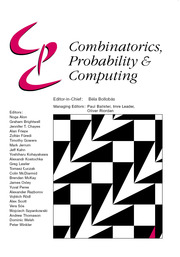Crossref Citations
This article has been cited by the following publications. This list is generated based on data provided by Crossref.
GIRÃO, ANTÓNIO
and
NARAYANAN, BHARGAV
2022.
Turán theorems for unavoidable patterns.
Mathematical Proceedings of the Cambridge Philosophical Society,
Vol. 172,
Issue. 2,
p.
423.


